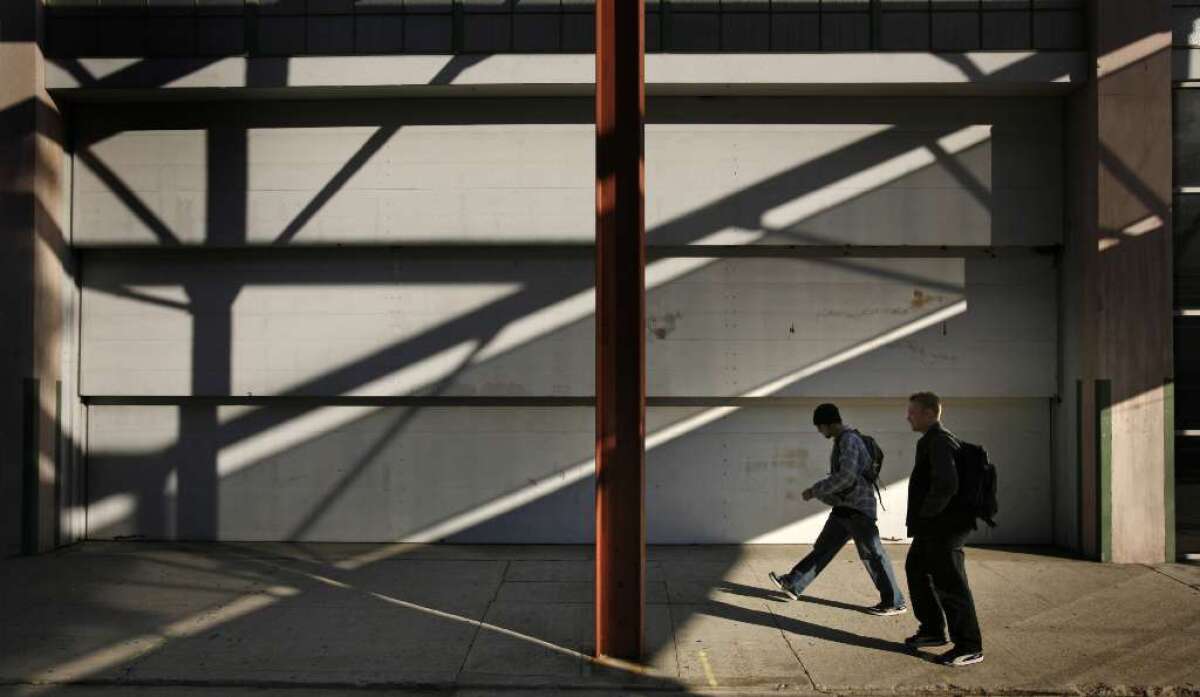MOCA gets a $5-million gift to transform the Geffen Contemporary for more performance

The Museum of Contemporary Art announced a $5-million gift Thursday to transform its Geffen Contemporary satellite space in Little Tokyo with a new performance-driven event series starting in the spring.
The $5-million gift, from longtime MOCA trustee Wonmi Kwon and her husband, Kihong Kwon, will take the form of Wonmi’s Warehouse Programs, a cross-disciplinary series that will emphasize varied forms of performance but will also include experiential installations, concerts, screenings, readings, conventions and other events. It also will host artist residencies and rehearsals.
The idea? “Encourage diverse, intergenerational experiences for new and established audiences,” the announcement said.
When MOCA Director Klaus Biesenbach took the reins a year ago, he said revamping the exhibit space physically and conceptually was top of mind.
“I see Warehouse Programs becoming its own institution within MOCA,” Biesenbach said in an interview this week about the changes, adding that the new space is very much of the moment. “All of the sudden performance seems to be the new authentic. When we can watch everything on Instagram and YouTube, it seems to be that people want to see [art] one-on-one — that’s what people are longing for.”
The Geffen Contemporary is a vast, pliable space where MOCA has encouraged experimentation. It’s been torn up and reconfigured by artists for exhibitions. But that also has led to long periods when the space is closed between exhibitions, as de-installation and the next show’s installation can be complicated and laborious. In 2018, the Geffen Contemporary was closed for six months between “Adrián Villar Rojas: The Theater of Disappearance” and the opening of the Laura Owens and Zoe Leonard surveys.
The new Geffen Contemporary will include an “artist bar and restaurant” that will flow onto the adjacent plaza. Other upgrades include theatrical lighting and audiovisual systems for music and performance. One side of the Geffen will house 27,000 square feet of flexible space for exhibitions like the ones the Geffen currently presents. The other side will be 14,500 square feet dedicated to Wonmi’s Warehouse Programs.
During the last year, Biesenbach said, he toured the Geffen space with artists, curators, arts administrators, theater and dance professionals, projection and sound technology specialists and others, asking them for feedback about how to revamp the space. Benjamin Millepied, founder of L.A. Dance Project, and Kristy Edmunds, executive and artistic director of UCLA’s Center for the Art of Performance, were among them. Biesenbach said he asked everyone: What would you do here? “It was, ‘Let’s look at this together’ and they all gave us incredible, valuable advice,” Biesenbach said.
One suggestion: Address the eastern exterior of the building.
Last year MOCA unveiled a Barbara Kruger mural, “Untitled (Questions),” on the Geffen exterior facing Temple Street. It was paid for by Kwon, the museum revealed on Thursday. Another outdoor Kruger mural is now in the works, which will appear on the east side of the Geffen facing Alameda Street. MOCA wouldn’t reveal what the new mural will look like, just that it will address art and what the museum means for the city, and that it will be “provocative.”
“Everyone was telling us, ‘The backside of your building on Alameda looks a little bit like the storage of a museum, not a museum itself,’” Biesenbach said. “And with people using the Metro, there’s a lot of foot traffic there. All of the sudden, it became an urgency to think about that. I asked Barbara Kruger if she could imagine helping us create an institutional facade that looks like a facade and not a backside.”
The museum would not disclose the cost of the changes at the Geffen. It’s too soon to announce a programming lineup, Biesenbach said, but expect participatory events and artists with more of a social practice than, say, a sculptural one.
“It’s an open and free space to be filled with ideas to come,” he said. “That’s what we mean when we talk about the cutting edge — anticipating artists and inspiring artists to develop something for this new format.”
More to Read
The biggest entertainment stories
Get our big stories about Hollywood, film, television, music, arts, culture and more right in your inbox as soon as they publish.
You may occasionally receive promotional content from the Los Angeles Times.











